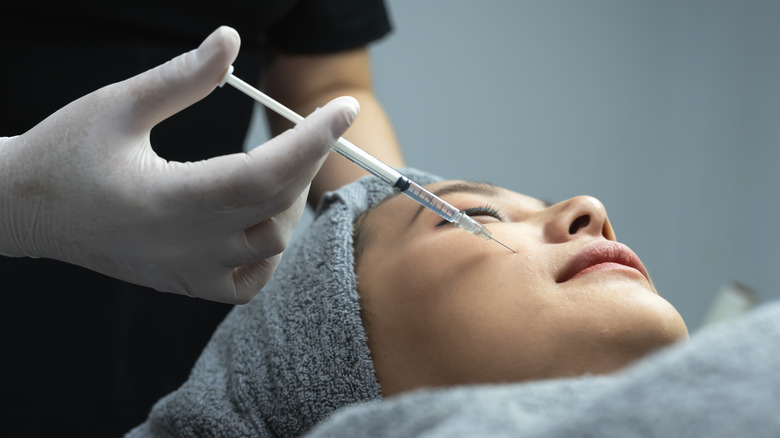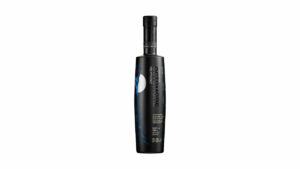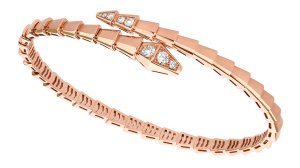
Andrew Harnik/Getty Images
For years, Kimberly Guilfoyle has been in the public eye, from her days as a model to her time spent as a media personality. That said, those who have followed her career — including her recent appointment as the ambassador to Greece under the second Trump Administration — aren’t quite recognizing the Guilfoyle they once knew. Indeed, many fans as well as medical experts believe that she’s invested in a variety of cosmetic procedures (not the most dangerous plastic surgeries, though.)
This isn’t shocking, as cosmetic surgery has become more mainstream. Per the American Society of Plastic Surgeons, cosmetic procedures are on the upswing: Between 2022 and 2023, the occurrence of all types of procedures rose by 5%; minimally invasive ones enjoyed a 7% growth.
However, any cosmetic procedures can be risky under certain conditions. And while Guilfoyle hasn’t admitted to undergoing cosmetic alterations, some healthcare professionals have speculated about some that she may have had.
The first cosmetic procedure that Guilfoyle may be using to alter her appearance is the injection of dermal fillers in her lips, cheeks, and surrounding facial features. Dr. Dennis Schimpf, a board-certified plastic surgeon, believes that Guilfoyle has turned to “using fillers in an effort to improve bone structure and maintain the youthful, desired inverted-triangle appearance from her mid-face to her chin” (via Glam).
Health-related concerns regarding the use of fillers

Jacktamrong/Shutterstock
Dermal fillers are injected under the skin to create a plumper look and decrease the depth of fine lines that happen due to age-related collagen loss. (Think twice before getting fillers in certain parts of your face, though.)
Since fillers can be injected in an office setting, they are considered less risky than surgical procedures. Nonetheless, the U.S. Food and Drug Administration (FDA) explains that, though rare, serious side effects like allergic reactions or the death of tissues at the injection site have been reported. To date, Guilfoyle hasn’t seemed to experience any obvious negative responses to fillers that might be visible in public photos, like long-term bruising or swelling.
The easiest way to avoid any complications is to say no to fillers. But if you decide that a filler might be for you, be sure your doctor uses a filler that’s FDA-approved to reduce your risk. And make sure you’re getting care from a reputable medical professional. As reported by the U.S. Centers for Disease Control and Prevention (CDC), 15 patients of a Florida cosmetic surgery center in 2022 and 2023 experienced infections due to improper preventive protocols.
Possibility of an invasive procedure

Gorodenkoff/Getty Images
In addition to fillers, Dr. Schimpf thinks that Guilfoyle may also rely on Botox injections (via Glam). Getting injected with Botox is a bit different from getting injected with a filler. Botox is a toxin that essentially paralyzes the muscles. As the muscles relax, the frown lines, wrinkles, and crow’s feet around them tend to be minimized.
Like fillers, Botox injections are generally considered safe as long as you go to a licensed and knowledgeable practitioner, as well as educate yourself on what to know about Botox beforehand. Botox can have downsides, though. Some individuals end up with uneven smiles, infections, and allergy-related issues. Again, Guilfoyle hasn’t openly talked about having Botox or any of those outcomes.
A final cosmetic procedure that Guilfoyle may have opted for is a facelift. Plastic surgeon Dr. Gary Motykie discussed this possibility (via Instagram). He observed some facial pulling that seemed to be an indicator of a previous facelift. To support his theory, he compared older and more recent photos of Guilfoyle. Traditional facelifts are considered more invasive procedures than filler or Botox injections because they require cutting and manipulating the skin and its underlying structures. Consequently, traditional facelifts can be the cause of serious or life-threatening complications. Just a few of the known possible downsides to facelifts are permanent scars, nerve damage, and adverse reactions to the use of anesthesia.
Credit: healthdigest.com










